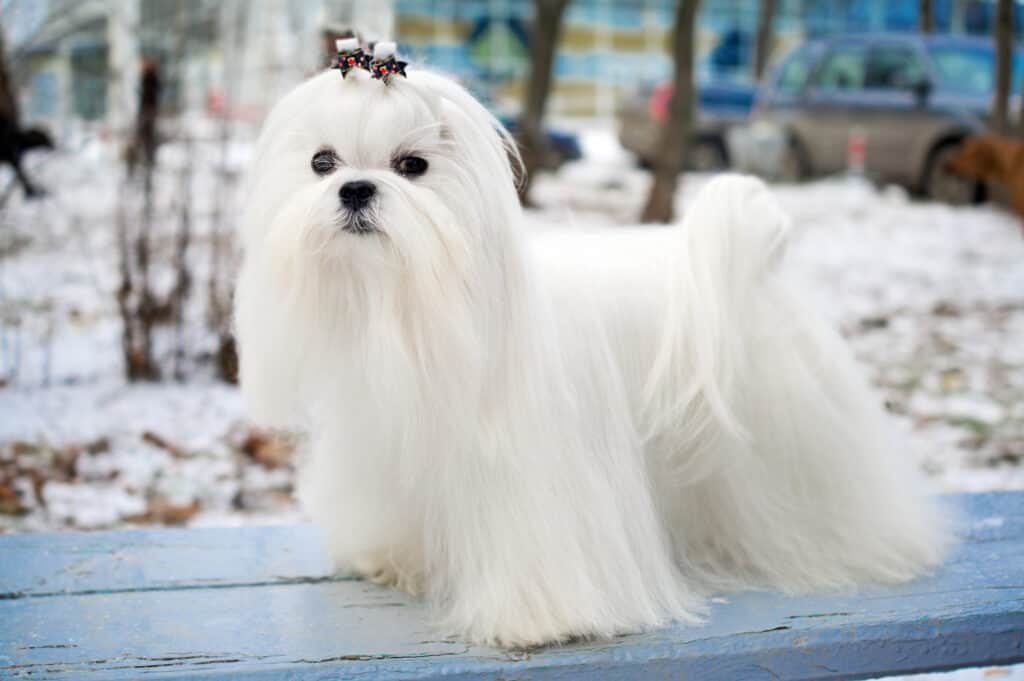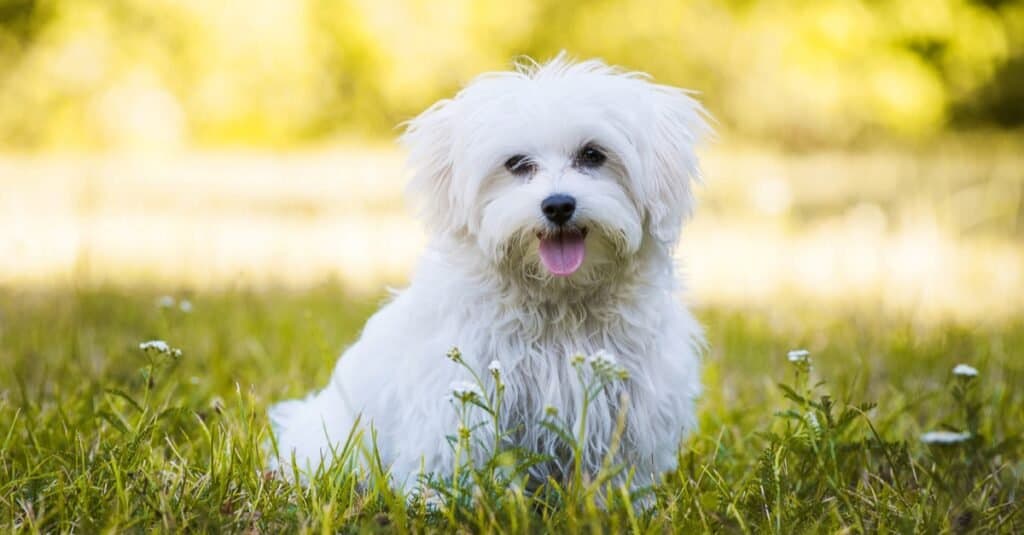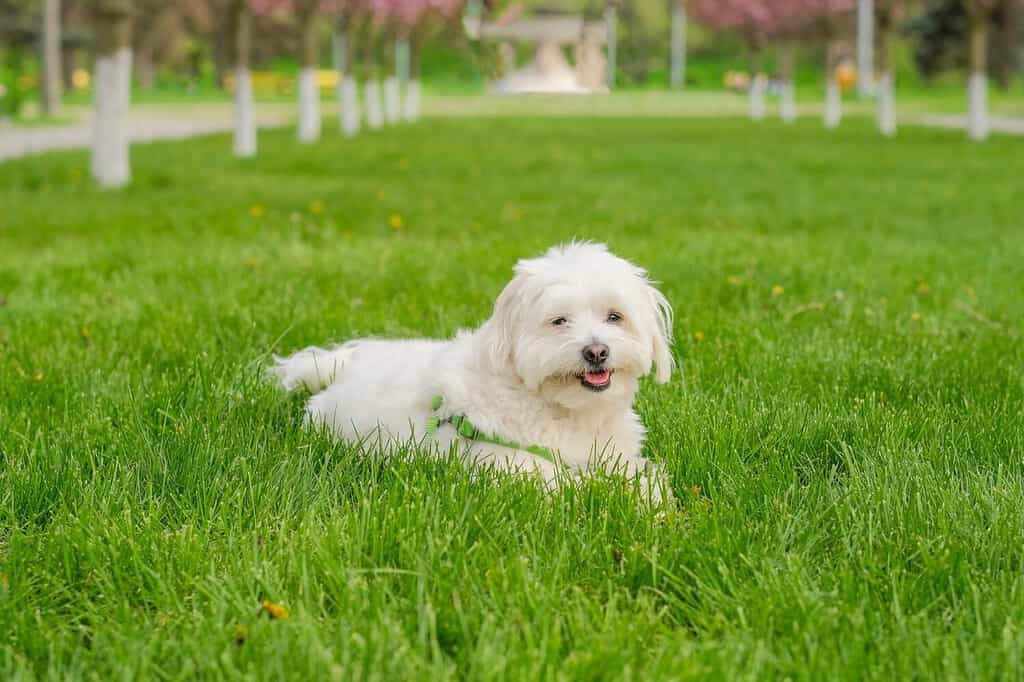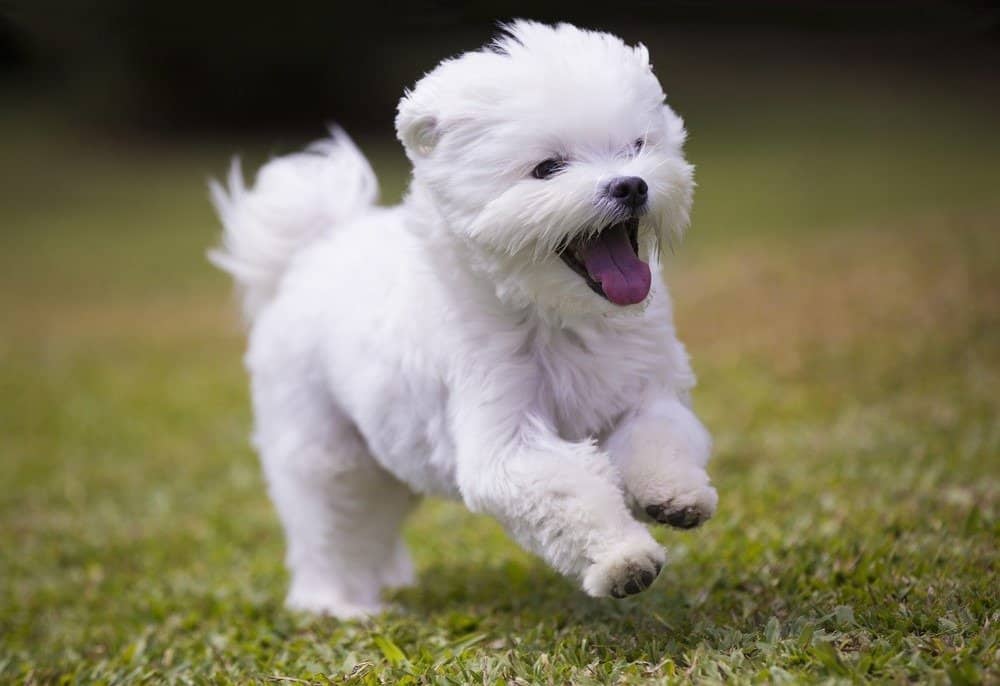If you want to add an adorable toy dog to your family, a Maltese is a great choice for smaller apartments and condos. They don’t require much room but will still give you all the doggy love that you might want from a pet. They tend to be very affectionate and love to spend time with their owners. When brushed and kept clean, Maltese dogs have silky white coats. However, Maltese dogs do need special care which some pet owners may not want to take on. This begs the question, are Maltese more troublesome dogs than other breeds? Here are some of the common complaints about Maltese dogs so that you know if they are the right fit for your family.
1. High Maintenance Grooming

Maltese are noble dogs with affectionate and lively personalities who look cute with short or long hair.
©iStock.com/Laures
With such a fluffy coat comes a lot of maintenance. One of the reasons some people feel that Maltese dogs are troublesome is their need for frequent brushing to keep their coats in the best shape. You can keep their coat short or long, which changes the daily routine. Short coats can do around 2 or 3 days between brushings. But any longer and you’ll be detangling knots for a long time. Long coats require even more frequent brushing, usually once a day for the best coat or as needed throughout the day. Many Maltese owners are happy to find out that these dogs don’t shed, at least not much compared to other breeds. But you should still keep up with your brushing.
You should plan on bathing your Maltese every week or two, depending on the length of their hair and their activity level. White hair shows dirt and grime more obviously than some other colors. So to keep their coat brilliant white, baths are a necessity. Trips to the groomers will be more frequent with Maltese as well. If you want to keep up with a short haircut, plan on returning every 4 to 6 weeks. For long hair, you’ll have to bring your Maltese in for a trim. Either way, trips to the groomer are also required for general cleanliness, such as ears and nails.
2. Small Size

Make sure to keep a close eye on your Maltese, who can be injured quickly during any rough play.
©Tomsickova Tatyana/Shutterstock.com
Maltese stay very small, rarely getting larger than 8 pounds. This makes them more likely to get injured in the course of everyday life. While they get along well with kids, playing rough with them can cause injury quickly. The same is true of dogs larger than them, which includes most dogs they might run across at the dog park. Even good-natured playing can be disastrous for a small Maltese. It’s best to keep them on the leash unless you are very confident that the people and pets around them won’t get too rough.
Some training is also necessary to keep them safe when out and about. Teach your Maltese the basics like “sit” and “come.” These will come in handy when you see another dog off-leash or an overly interested child. Maltese can be difficult to train but respond well when they are rewarded. Like with any dog or training regimen, being consistent is key.
3. Prone to Separation Anxiety

A Maltese dog is small and compact, loves to be cuddled, and thrives on human attention.
©Dora Zett/Shutterstock.com
This issue isn’t so much a characteristic of the breed as it is a common result of giving them so much attention that they have trouble when you aren’t there. Maltese are usually very affectionate dogs who fit right in your lap so it can be easy to keep them close when you are home. They might get used to this routine and get separation anxiety when you have to leave. If your Maltese is chewing or destructive, it might be acting out when you leave. The best way to keep this from becoming a complaint is to keep them well-socialized and used to a consistent routine that includes time on its own.
4. May Be Challenging to Potty Train

It often takes months to successfully housebreak a new puppy and may take longer for a Maltese.
©Carnivorka/Shutterstock.com
They have a reputation for being difficult to house train which is why some people think of Maltese as troublesome dogs. Housebreaking any new puppy can take multiple months and it’s normal to have occasional accidents even much later. But a Maltese might be harder to train than most thanks to their small bladders and short attention span. Not all Maltese owners find this to be true, however, so it does depend on the individual dog.
The good news is that Maltese puppies respond well to affection and praise. Using rewards when doing any sort of training is a good idea with Maltese. So praising them when they go in the right place can be a very effective tactic to reinforce the expectation of going outside. You can also praise your puppy for letting you know that they need to go outside. Being consistent is an important part of potty training your Maltese.
5. Obesity

Maltese are a toy dog breed and typically reach between 4 and 6 pounds when fully grown.
©Kimrawicz/Shutterstock.com
Maltese are very small dogs. The American Kennel Club describes the ideal Maltese as “weight under 7 pounds, with from 4 to 6 pounds preferred.” With such a small stature, feeding your Maltese the wrong thing can put on extra weight quickly. Overfeeding is a common culprit, especially if your pup likes to chow down. Consider feeding them small meals multiple times per day or measuring their food to prevent them from feeding freely.
You can also talk to your vet about a healthy weight range and even get specialized diet recommendations to help get them there. Obesity can make life difficult for your Maltese since they can’t get around as easily. It can also lead to serious problems such as heart disease or diabetes.
6. Heart Issues

Periodic checkups at the vet are essential to keeping any dog healthy and addressing problems right away.
©gorillaimages/Shutterstock.com
Maltese can inherit predispositions to some diseases and health complaints, most notably heart issues. They are at risk for Patent Ductus Arteriosis, which simply means that the vessel carrying blood within the heart does not close as it should. This can be detected by listening for a characteristic heart murmur (best done by a vet during an exam). Signs that this is a problem include unusual fatigue, shortness of breath, or weight loss.
As they age, the valves in the heart become weaker, which can eventually put too much strain on the heart. Older Maltese are at risk for heart disease as well. This risk is greater if their heart has been strained over long periods, especially if they are obese. Keeping up with regular exams at the vet and ensuring your dog is a healthy weight can reduce this risk.
7. Skin Issues

Watch for flaky, dry skin in your Maltese because it might be a sign of a more chronic skin condition.
©Ermolaeva Olga 84/Shutterstock.com
Maltese have a luxurious coat of hair, cut short or kept long, but underneath that elegant mane is skin that can have some problems of its own. Maltese are at risk for a condition called sebaceous adenitis. In these cases, the skin does not produce enough sebum and the result is usually dry, scaly skin. It can be uncomfortable and impact their hair as well. You can talk to your vet about supplements to help treat the cause as well as specialized shampoos to keep their skin flake-free and healthy in the meantime. After all, you’re likely bathing your Maltese often anyway.
Summary of Common Complaints with Maltese Dogs
| Number | Issue |
|---|---|
| 1 | High-Maintenance Grooming |
| 2 | Small Size |
| 3 | Prone to Separation Anxiety |
| 4 | May Be Challenging to Potty Train |
| 5 | Obesity |
| 6 | Heart Issues |
| 7 | Skin Issues |
The photo featured at the top of this post is © fotovideoslk/Shutterstock.com
Ready to discover the top 10 cutest dog breeds in the entire world?
How about the fastest dogs, the largest dogs and those that are -- quite frankly -- just the kindest dogs on the planet? Each day, AZ Animals sends out lists just like this to our thousands of email subscribers. And the best part? It's FREE. Join today by entering your email below.
Thank you for reading! Have some feedback for us? Contact the AZ Animals editorial team.







